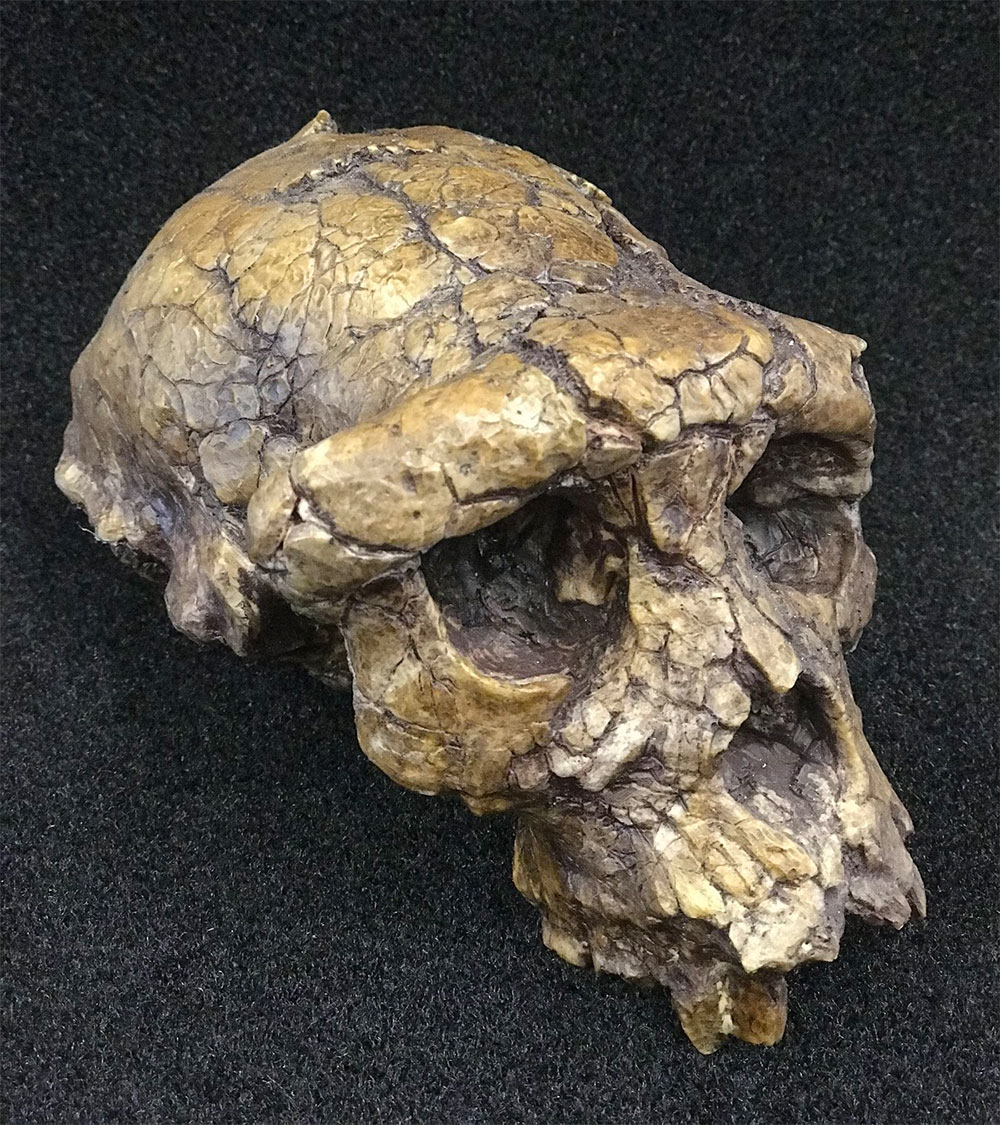Sahelanthropus tchadensis
Cranium TM 226 - 6.7 Million Years Ago


The Sahelanthropus tchadensis skull was discovered by Michael Brunet's team in Chad in 2001 and described in Nature in 2002. The early date of this skull is significant in that it places it at around the time the human lineage is believed to have diverged from the ape lineage. Radioisotope dating was not possible for this skull given the absence of volcanic ash layers. Instead, faunal analysis was done on other fossil animals found on-site and which had been radiometrically dated in other areas.
Therefore, some suggest that S. tchadensis existed near the time that hominins and apes separated on their evolutionary paths. It could be that this specimen is a representative of an early hominin, predating A. afarensis by 3 to 4 million years; on the other hand, it might be an ancestor of the chimpanzee or gorilla. The characteristics of the cranium are a mosaic of hominid-like (short face, the size and shape of the canines), and ape-like (very large brow ridges and small brain case) features.
Read more Australian Museum's Sahelanthropus tchadensis
Sahelanthropus tchadensis: cranium | 3D Digitization (si.edu)
- Hominin Skulls - Select a Species
- Ardipithecus kadabba
- Ardipithecus ramidus
- Australopithecus afarensis
- Australopithecus africanus
- Australopithecus anamensis
- Australopithecus garhi
- Australopithecus sediba
- Denisovans
- Homo antecessor
- Homo erectus
- Homo floresiensis
- Homo habilis
- Homo heidelbergensis
- Homo naledi
- Homo neanderthalensis
- Homo rudolfensis
- Homo sapiens
- Kenyanthropus platyops
- Ororrin tugenensis
- Paranthropus aethiopicus
- Paranthropus boisei
- Paranthropus robustus
- Sahelanthropus tchadensis

